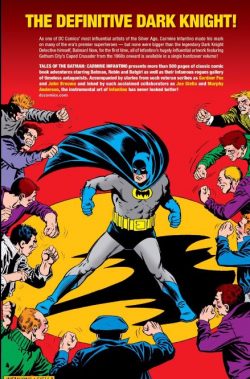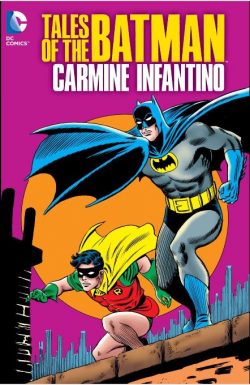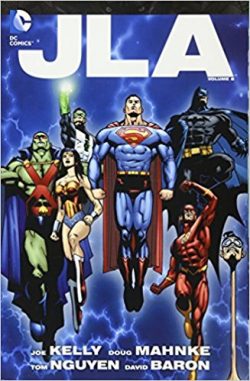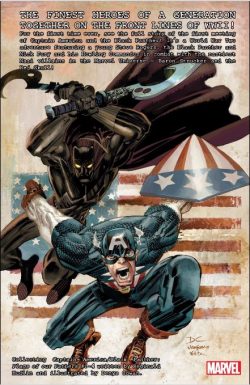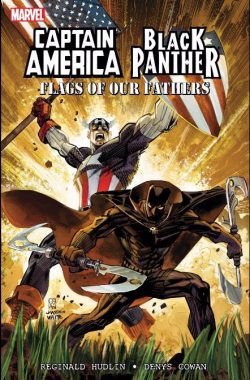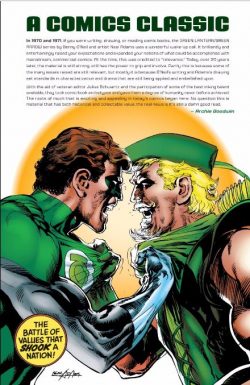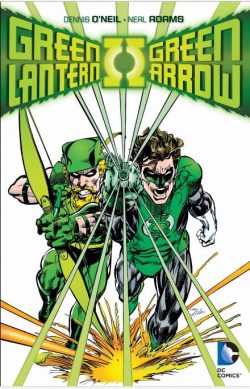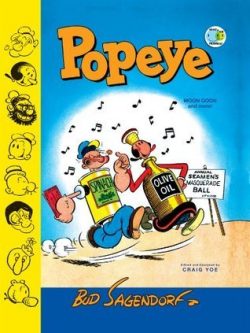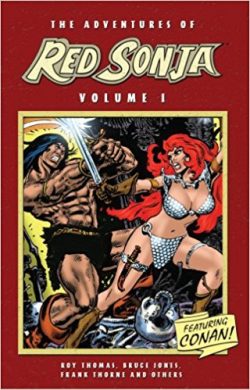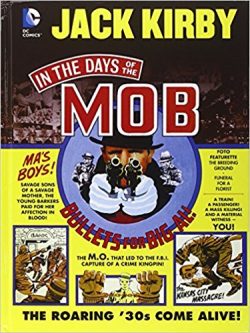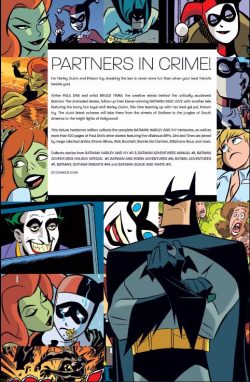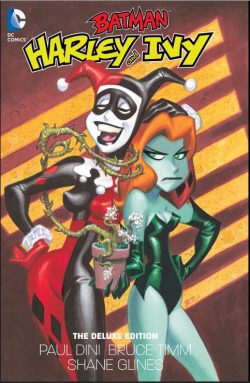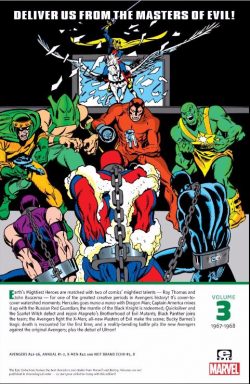
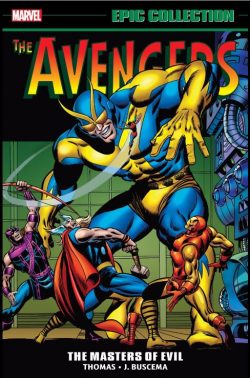
By Roy Thomas, Gary Friedrich, John Buscema, Don Heck, Werner Roth, Gene Colan & various (Marvel)
ISBN: 978-1-3029-0410-4
Win’s Christmas Gift Recommendation: Blockbuster Bombast and Astounding Action… 9/10
One of the most momentous events in comics history came in the middle of 1963 when a disparate array of individual heroes banded together to combat an apparently out of control Incredible Hulk. The Avengers combined most of the company’s fledgling superhero line in one bright, shiny and highly commercial package. Over the intervening decades the roster has unceasingly changed, and now almost every character in the Marvel multiverse has at some time numbered amongst their colourful ranks…
The Avengers always proved that putting all one’s star eggs in on single basket can pay off big-time. Even when all Marvel Royalty such as Thor, Captain America and Iron Man are absent, it merely allows the team’s lesser lights to shine more brightly.
Of course, the founding stars always regularly featured due to the rotating, open door policy which meant most issues included somebody’s fave-rave. After instigators Stan Lee & Jack Kirby moved on, the team prospered under the guidance of Roy Thomas who grew into one of the industry’s most impressive writers, guiding the World’s Mightiest Heroes through a range of adventures ranging from sublimely poetic to staggeringly epic…
This compilation – available in trade paperback and eBook iterations – collects Avengers #41-56, the first two Avengers Annuals, a crossover from X-Men #45 and pertinent vignettes from Not Brand Echh #5 and 8, collectively covering June 1967 to September 1967.
The first adventure is a historical and creative landmark as ‘Let Sleeping Dragons Lie!’ (inked by George Roussos) sees John Buscema assume the pencilling in an epic melange of monsters, insidious espionage and sheer villainy, as mad alchemist Diablo and enslaved artificial life-form Dragon Man attacks the team – Goliath, the Wasp, Hawkeye, Quicksilver, the Scarlet Witch and newly-recruited exile Olympian deity Hercules…
The extended plotline continues in ‘The Plan… and the Power!’, as, with Diablo defeated, the team – now including Captain America – turn to rescuing reformed former soviet spy Black Widow from the Communist Chinese in #43’s ‘Color him… the Red Guardian!’
Having uncovered a world-threatening superweapon, the Avengers fight the battle of their lives as the saga climaxes in ‘The Valiant Also Die!’ (inked by Vince Colletta), a blistering all-out clash to save humanity from mental conquest.
Buscema had replaced Don Heck so the regular illustrator could concentrate on the debut Avengers Annual: a “49-page free-for-all†entitled ‘The Monstrous Master Plan of the Mandarin!’. Scripted by Thomas and inked by Roussos, this prodigious tribute to the golden Age Justice Society of America and All-Winners Squad saw Captain America, Goliath, Hawkeye, Hercules, Iron Man. Quicksilver, Scarlet Witch, Thor and the Wasp compelled to battle against the Enchantress Executioner, Living Laser, Power Man, Swordsman and the bio-mechanical behemoth Ultimo across many continents to save humanity from the oriental outlaw overlord’s boldest scheme of subjugation. It’s everything a fan could want from a superhero tale: sheer escapism, perfectly handled.
Also included are the ‘Bombastic Bullpen Biography Dept.’ page, pin-ups of Hercules, Wasp, Scarlet Witch and Black Widow, Avenger Mansion cutaway diagram ‘More Than Meets the Eye!’ and a fabulous tableau contrasting the original and new Avengers line-ups.
The regular monthly storytelling resumes with Avengers #45 – a ‘Blitzkrieg in Central Park’ by Thomas, Heck & Colletta – wherein the triumphant team are ambushed by the power-stealing Super-Adaptoid, after which a treacherous murder attempt by an old foe nearly finishes Goliath and the Wasp.
‘The Agony and the Anthill!’ (with art by Buscema & Colletta) is a taut, human-scaled drama, which began a long period of superb collaborations that would change the face of team-up comics.
Thomas was quickly establishing himself as a major creative force in comics and his tense, bellicose yarns were propelling John Buscema to the forefront of fan-favourite artists. To supplement his already large team the writer began interweaving appearances by the founding stars: regularly showing up: giving the impression of a small army of costumed crusaders lurking in the wings at all times…
‘Magneto Walks the Earth!’ (Avengers #47, December 1967 and inked by George Tuska) finds the malign master of magnetism returned from enforced exile in space to put his old band back together. That means recruiting mutant Avengers Quicksilver and the Scarlet Witch… whether they’re willing or otherwise…
Tuska takes on full art-chores for the second chapter ‘The Black Knight Lives Again!’, which introduces a brand-new Marvel Superhero, whilst furthering a sub-plot featuring Hercules’ return to an abandoned and devastated Olympus before #49 (pencilled and inked by Buscema) concludes the Mutant trilogy with ‘Mine is the Power!’
This clears the decks for the tempestuous 50th issue tussle as the team rejoins Hercules in restoring fallen Olympus by defeating the mythological menace of Typhon in ‘To Tame a Titan!’
In the aftermath the team is reduced to Hawkeye, the Wasp and a recently de-powered Goliath, and soon the Avengers find themselves ‘In the Clutches of the Collector!’ (#51 and illustrated by Buscema & Tuska), but the handy intervention of Iron Man and Thor swiftly sees the Master of Many Sizes regain his abilities. This is just in time to welcome new member Black Panther in the Vince Colletta inked ‘Death Calls for the Arch-Heroes’: a fast-paced murder mystery which also see the advent of obsessive super-psycho the Grim Reaper.
Next follows a slightly disconcerting cross-over and conclusion to an extended X-Men clash with Magneto (from issues #43-45 of their own title) which dovetails neatly into a grand Avengers/X-Men face-off.
In X-Men #43, arch-nemesis Magneto attacked the outcast teen heroes with reluctant confederates Quicksilver, Scarlet Witch and the Toad, trapping them in his hidden island fortress. The next issue saw the Angel inexplicably escape and – after encountering a revived Golden Age Timely Comics hero – headed for America for Avenger reinforcements.
Those episodes aren’t included here but X-Men #45’s ‘When Mutants Clash!’ (Gary Friedrich, Don Heck, Werner Roth & John Tartaglione) sees Cyclops also break free, only to encounter and defeat the highly-conflicted Quicksilver…
The fight latterly concluded in Avengers #53 as ‘In Battle Joined’ (Thomas, Buscema & Tuska) details Magneto’s defeat by and apparent death after his scheme to trick mutants and superheroes into killing each other backfires.
Issue #54 kicked off a mini-renaissance in quality and creativity with ‘…And Deliver Us from the Masters of Evil!’, which brought back the new Black Knight – accidentally recruited to a revived team of scurrilous super-villains – and finally gave Avengers butler Edwin Jarvis a character and starring role.
This was merely a prelude to the second instalment which debuted the oppressively Oedipal threat of robotic tyrant Ultron-5 in ‘Mayhem Over Manhattan!’ (inked by the superbly slick George Klein).
Captain America’s introduction to the 1960s got a spectacular and thought-provoking reworking in Avengers #56 as ‘Death Be Not Proud!’ accidentally stranded him and his comrades in WWII on the fateful night when Bucky died. This adroitly segued into 1968’s Avengers Annual #2 (illustrated by Heck, Roth & Colletta).
‘…And Time, the Rushing River…’ reveals how Cap, Black Panther, Goliath, Wasp and Hawkeye return from the tragedy-drenched past to a divergent present where they must battle the original founding Avengers team of Iron Man, Thor, Hulk, Giant-Man and the Wasp to correct a reality manipulated by one of their deadliest foes in the new guise of the Scarlet Centurion.
Also included from that monumental release are a stunning Buscema pin-up of the entire team and fourth-wall shattering spoof ‘Avenjerks Assemble!’ by Thomas, Buscema & Frank Giacoia, revealing where the writer gets his ideas from…
The comedy hits keep coming as humour mag Not Brand Echh #5 offers the sterling saga of ‘The Revengers vs Charlie America’ by Thomas, Gene Colan & Tartaglione, reprising how – if not why – the heroes saved the Star-Spangled Simpleton of Liberty from icy entombment. The same creative culprits are responsible for ‘This Fan… This Forbush!’ from NBE #8 as the frankly feeble Forbush-Man joins the team to demolish time-bending baddie Dang the Conqueror…
Adding even more lustre and appeal to this tome are pages of original Buscema pencils, inked art and covers, a model sheet he produced in 1967 to get familiar with Cap and the team, plus unedited production photostats of pre-corrected covers. There’s even a Steve Ditko cover from Marvel Triple Action #47 (which reprinted Avengers #54) as well as Buscema’s cover from Avengers Annual #1; modified by painter Richard Isanove and used to front Marvel Masterworks: The Avengers volume 5.
Unceasingly enticing and always evergreen, these timeless sagas defined and cemented the Marvel experience and are a joy no fans of Fights ‘n’ Tights fiction should deny themselves or their kids.
© 1967, 1968, 2017 Marvel Characters, Inc. All rights reserved.

